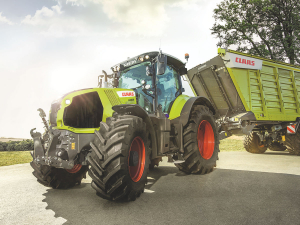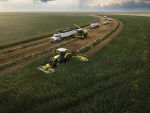Farm machinery maker Claas is celebrating having made 150,000 tractors since it bought the Renault brand in 2003.
To mark the occasion it is marketing two special editions of its Axion 870 (295hp) and Arion 660 (205hp) high tech tractors.
Both models use the company’s CMatic continuously variable transmission, front axle suspension, four point cab suspension, and the Cebis operating system Telematics.
A long list of cab features include leather trim, mobile phone mount, tinted rear window and LED lighting.
On the outside, the celebratory models will sport a metallic paint job and special ‘150,000’ decals.
Claas Harvest Centre product manager for tractors, Dave Knowles, says the company has over ten years spent at least $1 billion improving its tractor R&D and manufacturing capabilities.
“It has redeveloped its tractor manufacturing plant and built a testing facility in France and a transmission plant in Germany. This investment has allowed Claas to release a new series almost every year since 2006, an amazing achievement.”
Claas tractors have earned a string of international accolades in recent years, with the Xerion 5000, Axion 900 and Axion 800 winning Machine of the Year awards at Agritechnica.


















